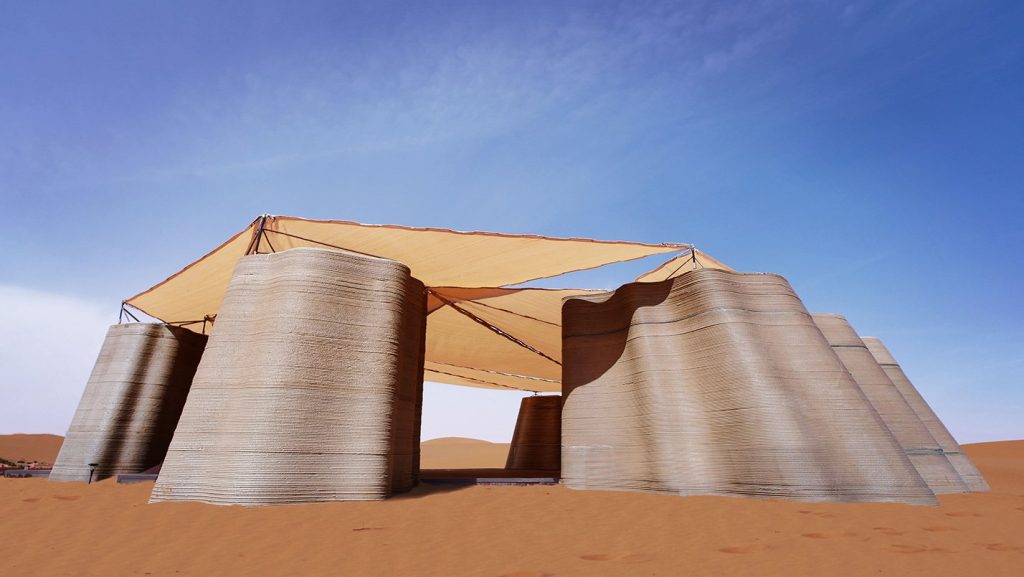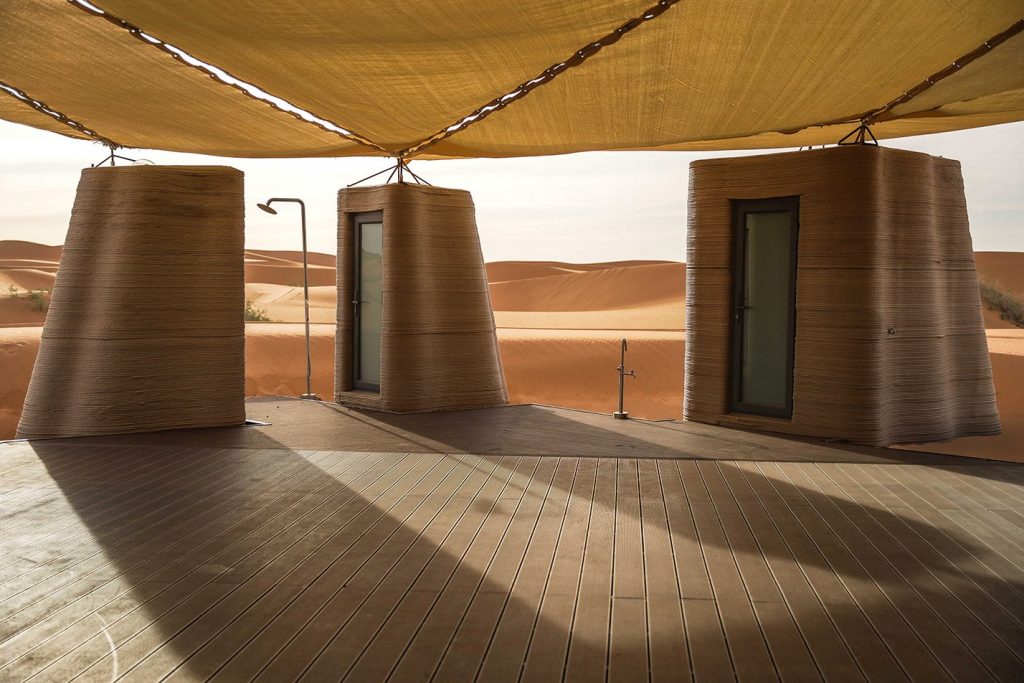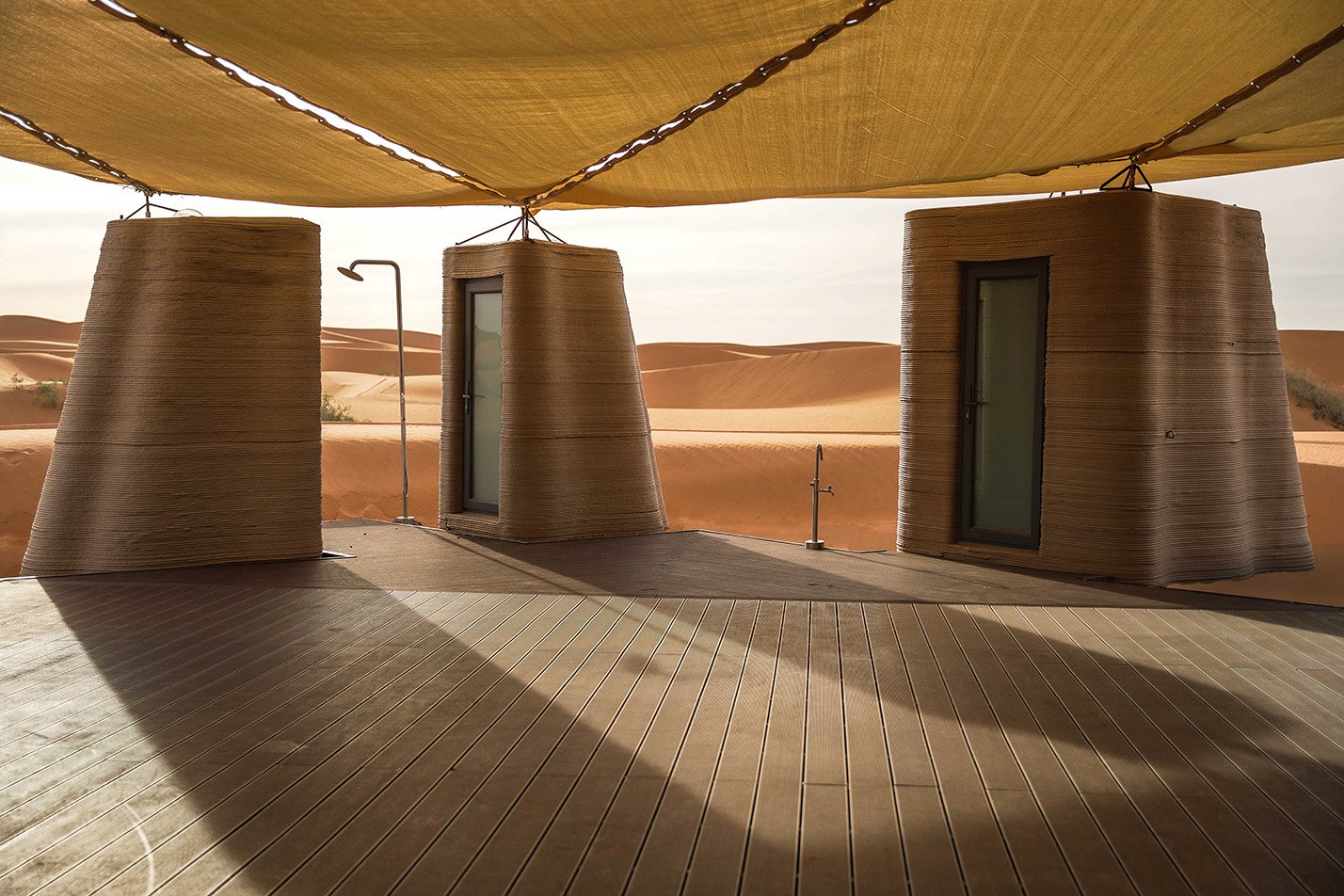In Inner Mongolia's Tengger Desert, a modular, 3D-printed shelter called Desert Ark, developed by creative agency designRESERVE, provides accommodation for volunteer rangers working on desert restoration projects. The structure combines prefabricated 3D printed units with off-grid systems, supporting operations in extreme temperatures and difficult conditions.
“As China's first 3D concrete printed structure in a desert environment, the project not only supports ecological restoration in Inner Mongolia, but also serves as an architectural prototype for future extraterrestrial habitats,” Desert Ark's project description says.

3D printing meets extreme conditions
Desert Ark consists of nine modular units – including a shower, kitchen and dining area – arranged around a 150 square meter circular foundation made of gravel, concrete sheeting and steel-reinforced plastic pallets. This arrangement creates a central community space that provides shelter and promotes interaction between residents.
The shelters are 3D printed using sand-based material and robotic construction technology. Their undulating exterior design helps them withstand the desert winds, while the layered texture allows the structures to blend into their surroundings. Insulated walls help maintain comfort in temperatures ranging from -30°C in winter to 45°C in summer.
The modules were prefabricated in Wuxi, China and divided into sections for easier transportation. They were delivered by truck and assembled on site within two days with the support of local shepherds. The shelters sit directly on the sand, are relocatable, and feature a retractable canopy, solar panels, and water systems for off-grid functionality.


3D printed houses around the world
In Western Australia, Contec introduced concrete 3D printing with the construction of a two-story house in the Perth suburb of Tapping. The project, carried out using a robotic printer from Dutch firm CyBe Construction, was the state's first multi-story 3D printed building. Contec's team, trained over two weeks, printed 15 walls of the 155 square meter house in just 10.5 hours of active printing. The second floor was completed in 18 hours of printing, a significant time saving compared to traditional methods. Founder Mark D'Alessandro noted that the approach directly addresses labor shortages and cost pressures in the Australian property market. The company plans to expand its printer fleet by 2025 to cover a wider range of residential and commercial projects in the region.
In the United States, ICON, a Texas-based construction 3D printing company, has begun selling one-bedroom homes in the Mueller community in Austin through the Mueller Affordable Homes Program. Each residence measures approximately 650 square feet and starts at $195,000, which is significantly lower than other 3D printed homes in the same neighborhood, which can top $1.3 million. Built using ICON's CarbonX material for thermal efficiency, the homes are part of a development that will eventually include larger two and three bedroom units. The program, administered by the nonprofit Mueller Foundation, reserves 25 percent of neighborhood homes for income-qualified buyers and targets households earning up to 80 percent of the area median family income.
Would you like to help shape the future of AM? Join the expert committee for our 3DPI Awards 2025, launching later this summer.
To stay up to date with the latest 3D printing news, don't forget to subscribe 3D printing industry newsletter or keep following us Twitteror like our page Facebook.
While you're here, consider subscribing to our YouTube Channel? With discussion, debriefings, video shorts and webinar replays.
The picture shown shows the shower and kitchen in the Desert Ark. Image via designRESERVE.
